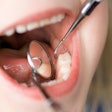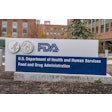
The article published by DrBicuspid.com ("Debate simmers on public water fluoridation," December 20) mischaracterizes what the science shows about both the health and financial impacts of fluoridation. We wish to clarify these findings.
The article asserted that a "steady accumulation of data shows some possible drawbacks to fluoridation" and cited the National Research Council's (NRC) 2006 report on fluoride as an example. This misrepresents the purpose of the NRC's inquiry, which was focused on the roughly one-half of 1% of Americans who live in areas where natural fluoride levels in water are at or above 2.0 milligrams per liter (mg/L). In fact, the NRC itself explained that its conclusions "regarding the potential for adverse effects from fluoride at 2 to 4 mg/L do not apply at the lower water fluoride levels commonly experienced by most U.S. citizens." Moreover, the Centers for Disease Control and Prevention (CDC) noted that the NRC's findings "are consistent with CDC's assessment that water is safe and healthy at the levels" used for water fluoridation.
These important and relevant details should have been included in the article. Without them, the article leaves the false impression that the NRC committee raised health concerns about optimally fluoridated water.
Regrettably, the article also omitted data-driven evidence about fluoridation's financial impact. It included an excerpt from a 2012 email that was written by Hardy Limeback, one member of the NRC committee. His email claimed that communities and parents would "save money" by ending fluoridation, but neglected to cite any valid research -- assuming it exists -- to support those assertions.
In fact, numerous studies and reports demonstrate that fluoridation saves communities money by reducing the need for dental treatments. For example, a peer-reviewed economic analysis published in 2001 revealed that in communities with more than 20,000 residents, a dollar invested in fluoridation saves approximately $38. A study of 1995-1996 data in Louisiana found that young low-income children in communities without fluoridated water were three times more likely than those in fluoridated areas to need dental treatment in hospital operating rooms. More recently, a 2010 study in New York state found that the annual treatment costs per child enrolled in Medicaid were almost $24 higher for those living in less fluoridated counties compared with those residing in counties where fluoridation was much more prevalent.
Those who have examined the impressive evidence supporting community water fluoridation probably scratched their heads the moment they read your article's "debate" headline. Indeed, there is no genuine debate about fluoridation's impact. After nearly 70 years, this health practice has been proved to be a safe and effective tool to prevent tooth decay.
Harry S. Goodman is the president of the Association of State and Territorial Dental Directors in Sparks, NV. Matt Jacob is the communications and outreach director of the Children's Dental Health Project in Washington, DC.
The comments and observations expressed herein do not necessarily reflect the opinions of DrBicuspid.com, nor should they be construed as an endorsement or admonishment of any particular idea, vendor, or organization.



















